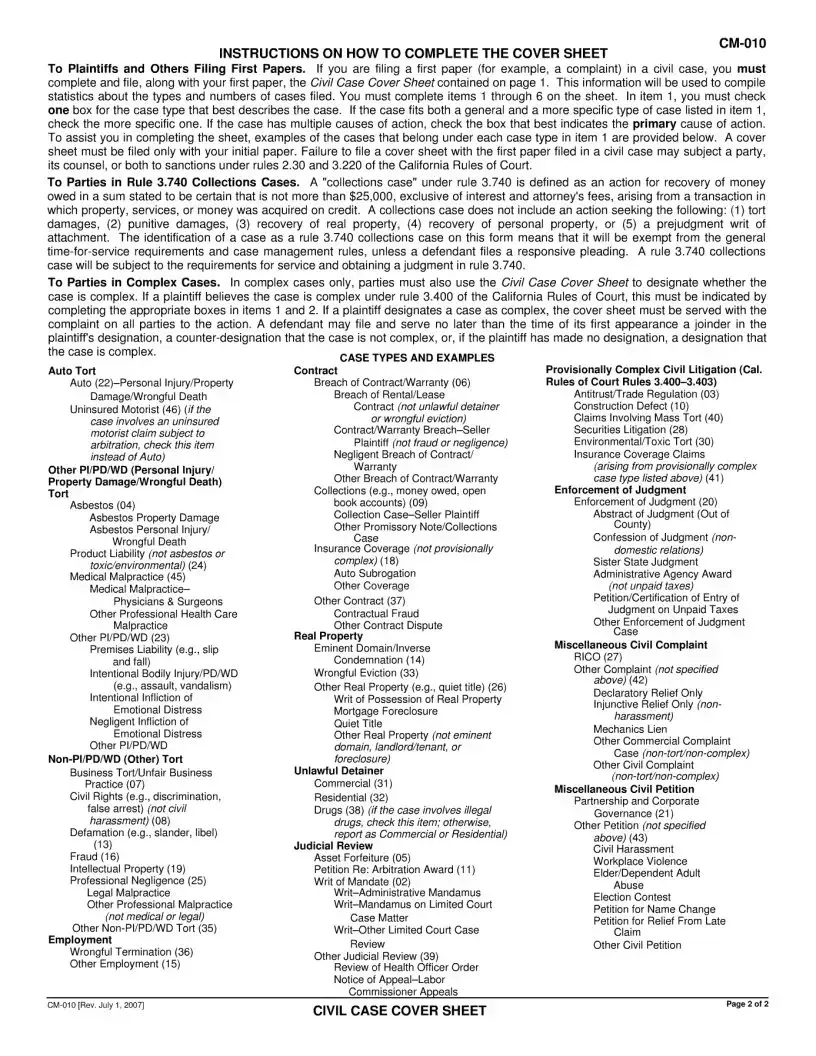What is the purpose of the California Civil Case Cover Sheet?
The California Civil Case Cover Sheet is a document required by the California judicial system when initiating a civil case. It serves to categorize the case and provide key information about the nature of the legal action being filed. This information assists the court in managing its caseload efficiently and compiling statistics on the types of cases filed in California.
When must the cover sheet be filed?
The cover sheet must be filed along with the first paper filed in a civil action, such as a complaint or petition. It is essential to include the cover sheet at this stage because failure to do so may lead to sanctions. Remember, it does not apply to small claims cases or those filed under specific codes like the Probate Code or Family Code.
What information is required on the cover sheet?
To complete the cover sheet, you need to fill out items 1 through 6. This includes selecting the best-fitting case type, indicating whether the case is complex, specifying remedies sought, and listing the number of causes of action. Additionally, if known related cases exist, you should file and serve a notice of those cases as well.
What does it mean for a case to be classified as "complex"?
A complex case under California Rule 3.400 is characterized by certain factors that require exceptional judicial management. These may include a large number of separately represented parties, extensive motion practice involving difficult issues, or a substantial amount of documentary evidence. Notably, if you believe your case meets these criteria, you must indicate this on the cover sheet.
Are there specific case types listed on the form?
Yes, the cover sheet includes a variety of case types under categories such as Auto Tort, Contract, Real Property, Employment, and Miscellaneous Civil Complaint. It is important to select the box that best describes your case, as this designation helps the court understand the nature of the action.
What are the remedies I can seek in my civil case?
When completing the cover sheet, you have the option to check all remedies you are seeking. These may include monetary relief, non-monetary relief, declaratory relief, or injunctive relief. You should accurately describe the specific relief you are pursuing, as this can impact the course of your case.
What should I do if I know of any related cases?
If there are known related cases to your current civil action, you must file and serve a notice of those related cases. Utilizing form CM-015 is an option for notifying the court and other parties about these relationships, which can help streamline the judicial process.
What may happen if I fail to file the cover sheet?
Failure to file the civil case cover sheet along with your initial court documents may lead to sanctions. Such sanctions can affect both the party filing the action and their legal counsel. It is crucial to adhere to this requirement to avoid unnecessary complications in your case.


